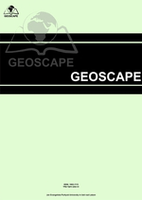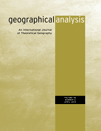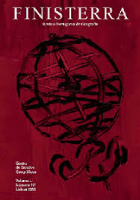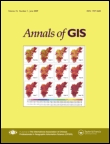
Journal of Geographical Systems
Scope & Guideline
Transforming Research into Actionable Knowledge for Policy Makers
Introduction
Aims and Scopes
- Spatial Analysis and Modeling:
The journal emphasizes the development and application of statistical and computational models to analyze spatial data, including techniques like spatial regression, machine learning, and geovisualization. - Geographical Information Systems (GIS) Applications:
Research articles often explore the practical applications of GIS in various fields, including urban planning, public health, and environmental science, demonstrating how spatial data can inform decision-making. - Big Data Integration:
A significant focus is placed on the integration of big data sources into geographical analysis, utilizing advanced tools and algorithms to derive insights from large datasets. - Human Mobility and Spatial Behavior:
The journal investigates patterns of human mobility, including the influence of geographical context on mobility behavior, using innovative metrics and modeling techniques. - Social and Environmental Inequalities:
Research often addresses social and spatial inequalities, analyzing how geographical factors contribute to disparities in health, access to resources, and environmental impacts. - Temporal Dynamics in Geography:
The journal also explores the temporal aspects of spatial phenomena, examining how time interacts with geography in various contexts, including urbanization and public health.
Trending and Emerging
- Machine Learning in Spatial Analysis:
There is a growing trend towards applying machine learning techniques to spatial data analysis, allowing for more sophisticated modeling and prediction of spatial phenomena. - Health Geography and Pandemic Research:
Recent publications show an increased emphasis on health geography, particularly in light of the COVID-19 pandemic, exploring spatial patterns of disease transmission and vaccination efforts. - Urban Heat Island and Environmental Impacts:
Research addressing urban heat islands and their relation to air quality and environmental justice is becoming more prominent, reflecting global concerns about climate change. - Participatory GIS and Community Engagement:
Emerging themes include participatory GIS approaches that emphasize community involvement in spatial planning and decision-making processes, highlighting the importance of local knowledge. - Mobility Analytics and Human Behavior:
There is an increasing focus on analyzing human mobility through innovative metrics and spatial behavior studies, particularly in the context of urban environments and transportation planning. - Integration of Open Data in Geographic Research:
The trend towards utilizing open data sources for geographical analysis is rising, facilitating more collaborative and transparent research practices in the field.
Declining or Waning
- Traditional Spatial Statistics:
There has been a noticeable reduction in the publication of papers solely focused on traditional spatial statistical methods, as the field shifts towards more complex, machine learning approaches that integrate various data sources. - Static Geographic Analysis:
Research that emphasizes static, one-time geographic analyses is becoming less common, with a growing preference for dynamic models that account for temporal changes in spatial data. - Localized Case Studies:
While localized case studies have historically been a staple of geographical research, there's a trend towards broader, multi-regional analyses that leverage comparative data and global perspectives. - Descriptive Mapping Techniques:
The use of basic descriptive mapping techniques is declining, as researchers increasingly adopt advanced visualization methods and geovisualization tools that provide deeper analytical insights. - Focus on Purely Theoretical Frameworks:
There is a waning interest in papers that focus solely on theoretical frameworks without empirical applications or practical implications, as the journal prioritizes studies with actionable insights.
Similar Journals

Annals of the American Association of Geographers
Fostering Dialogue in the Evolving Landscape of GeographyAnnals of the American Association of Geographers is a leading academic journal published by Routledge Journals, Taylor & Francis Ltd, and is based in the United Kingdom. With an impact factor positioning it in the Q1 category for both Earth-Surface Processes and Geography, Planning and Development, it stands as a pivotal resource for researchers and professionals in the fields of geography and environmental sciences. The journal’s broad scope accommodates a diverse range of topics, including spatial analysis, environmental change, and human geography, reflecting the dynamic nature of geographical research. Accessible in both print and digital formats, the journal encourages open dialogue and dissemination of knowledge among its authors, readers, and the academic community. As it converges through the years from 2016 to 2024, the Annals continues to showcase high-quality research that influences geographic thought and practice, making it essential reading for students, academics, and practitioners alike.

GeoScape
Bridging the gap between science and sustainable development.GeoScape is a distinguished open-access journal published by SCIENDO, operating since 2006 and aimed at fostering knowledge in the fields of Ecology, Geography, Urban Studies, and Nature and Landscape Conservation. Based in Warsaw, Poland, the journal maintains a robust academic presence with an impact factor reflective of its quality, prominently positioned in the Q3 category for multiple significant subject areas as of 2023. With its commitment to disseminating high-quality research, GeoScape holds notable Scopus rankings, including a rank of #94 in Urban Studies and #213 in Ecology, signifying its contribution to environmental science discussions. The journal serves as an essential resource for researchers, professionals, and students seeking to advance their understanding of contemporary ecological challenges and urban development in an accessible format.

Geographical Research
Innovating the Landscape of Geographical ScholarshipGeographical Research, published by WILEY, is a premier academic journal based in the United Kingdom, dedicated to advancing knowledge in the fields of Geography, Planning, and Earth-Surface Processes. With an impact factor that reflects its high academic caliber, this journal ranks in the Q2 category for Earth-Surface Processes and Q1 in Geography, Planning and Development, highlighting its influential role in shaping contemporary research within these disciplines. The journal's Scopus rankings further underscore its significance, standing at #175 out of 821 in Geography, and #41 out of 179 in Earth-Surface Processes, placing it within the top 78th and 77th percentiles, respectively. Since its inception in 2005, Geographical Research has continuously provided a vital platform for scholars to disseminate innovative research, fostering dialogue and collaboration across disciplines. Although currently not open access, its content remains indispensable for researchers, professionals, and students aiming to deepen their understanding of geographical phenomena and develop strategic insights for planning and development.

Geo-Spatial Information Science
Exploring the Intersection of Geography and TechnologyGeo-Spatial Information Science, published by TAYLOR & FRANCIS LTD, is a premier open-access journal that has been at the forefront of disseminating cutting-edge research since its inception in 1998. With an ISSN of 1009-5020 and an E-ISSN of 1993-5153, this journal plays a pivotal role in the fields of Computers in Earth Sciences and Geography, Planning and Development, achieving a prestigious Q1 ranking in both categories as of 2023. Its exemplary Scopus rankings highlight its relevance within the social sciences and earth sciences, placing it among the top echelons of its field, with a 95th and 93rd percentile respectively. The journal aims to bridge the gap between innovative geospatial technologies and their applications in real-world scenarios, fostering interdisciplinary collaboration and advancing the global understanding of spatial data analysis. Based in the United Kingdom, Geo-Spatial Information Science invites researchers, professionals, and students to contribute and access research that shapes the future of geo-spatial sciences, all while adhering to open access principles that ensure broad dissemination and engagement with the broader academic community.

Population Space and Place
Exploring the Dynamics of Population and SpacePopulation Space and Place is an esteemed academic journal published by WILEY, dedicated to advancing the fields of demography and geography, planning, and development. With an impressive 2023 impact factor and categorized in the top quartile (Q1) for both demography and geography, this journal serves as a vital platform for researchers, professionals, and students seeking to explore the spatial dimensions of population dynamics. Founded in 2004 and running through 2024, it has established itself as a significant contributor to scholarly discussions, evidenced by its high Scopus rankings, including rank #18 out of 139 in demography and #165 out of 821 in geography and planning. While the journal currently does not offer open access, it remains a key resource for those involved in academic research and policy formulation. With its focus on the interplay between population trends and spatial analytics, Population Space and Place is essential for anyone aiming to understand the complexities of population geography in a rapidly changing world.

GEOGRAPHICAL ANALYSIS
Unveiling Insights into Spatial DynamicsGEOGRAPHICAL ANALYSIS, published by WILEY, is a premier scholarly journal that has been at the forefront of geographical and earth-surface research since its inception in 1969. With an ISSN of 0016-7363 and an E-ISSN of 1538-4632, this journal has established itself as an essential resource for researchers and professionals in the fields of Earth-Surface Processes and Geography, Planning and Development, achieving impressive rankings of 13th and 60th in their respective categories according to Scopus, placing it in the Q1 quartile for both. The journal is renowned for its rigorous peer-reviewed articles that contribute valuable insights into spatial analysis, environmental impacts, and urban planning, thus fostering a deeper understanding of geographical phenomena. With access options available through traditional subscriptions, GEOGRAPHICAL ANALYSIS continues to serve as a critical platform for the dissemination of cutting-edge research and innovative methodologies, ultimately shaping the future of geographical inquiry and application.

Finisterra-Revista Portuguesa de Geografia
Unlocking Insights into Earth and Planetary SciencesFinisterra-Revista Portuguesa de Geografia is a distinguished academic journal published by the Centro de Estudos Geográficos, Universidade de Lisboa, since 1978, presenting a vital platform for research in the fields of Geography, Earth and Planetary Sciences. The journal operates under an Open Access model, encouraging broad dissemination of knowledge and ensuring that research is accessible to all, a commitment it has upheld since 2004. With a notable Q3 ranking in both Earth and Planetary Sciences (miscellaneous) and Geography, Planning and Development as of 2023, it serves as a significant conduit for scholarly discourse in these domains. The journal's scope reflects a diverse array of geographical studies, promoting interdisciplinary dialogue and research innovations, while its strategic publication history showcases its adaptability and relevance to contemporary issues. Researchers, professionals, and students alike are invited to engage with this pivotal resource that continues to shape geographical scholarship in Portugal and beyond.

Computational Urban Science
Innovating Urban Science for Sustainable FuturesComputational Urban Science is a pioneering open-access journal published by SpringerNature, dedicated to the interdisciplinary exploration of urban systems through computational research and innovative technologies. Launched in 2021, the journal is committed to advancing understanding in fields such as Artificial Intelligence, Computer Science Applications, and Environmental Science, alongside its significant focus on Urban Studies—a category where it has attained a distinguished Q1 ranking. With a robust impact reflected in its Scopus rankings, including a 78th percentile in Urban Studies, Computational Urban Science serves as a vital platform for researchers and professionals seeking to address contemporary urban challenges with data-driven insights. This journal not only champions comprehensive discussions and research findings but also invites contributions that emphasize the role of computational methodologies in shaping sustainable urban environments. Embrace the opportunity to engage with transformative research and join a growing community dedicated to the future of urban science.

Geografie
Fostering innovative solutions through rigorous research.Geografie, published by the Czech Geographic Society, serves as a vital resource in the fields of geography, planning, and development. With an E-ISSN of 1212-0014, this esteemed journal has been contributing to the academic landscape since its inception in 1992, providing a platform for rigorous research and diverse perspectives on earth-surface processes and regional development issues. Based in the heart of Prague at Charles University, it has reached an impressive convergence of scholarly excellence, ranking in the Q3 category for both Earth-Surface Processes and Geography, Planning and Development as of 2023. Although it does not currently offer open access, the journal is indexed in Scopus, holding significant positions within its realms—392nd out of 821 in Social Sciences and 89th out of 179 in Earth and Planetary Sciences—indicating its relevance and contribution to ongoing discussions in both disciplines. As an indispensable tool for researchers, professionals, and students alike, Geografie not only enhances the understanding of spatial processes but also fosters innovative solutions for contemporary geographical challenges.

Annals of GIS
Advancing Geographic Insights for a Better TomorrowWelcome to the Annals of GIS, a leading academic journal published by Taylor & Francis Ltd, dedicated to advancing the field of Geographic Information Science and its applications. With an ISSN of 1947-5683 and an E-ISSN of 1947-5691, this Open Access journal has been ensuring wide accessibility since 2019, thereby bolstering the dissemination of knowledge in areas such as remote sensing, spatial analysis, and geoinformatics. Hailing from the United Kingdom, the journal ranks impressively within its categories, achieving a Q2 status in Computer Science Applications and a prestigious Q1 ranking in Earth and Planetary Sciences for 2023, placing it in the top 10% among its peers. With a focus on innovative research spanning from 2009 to 2024, the Annals of GIS serves as a vital platform for researchers, professionals, and students alike, providing insights and fostering discussions that push the boundaries of geographic technologies and their real-world applications.